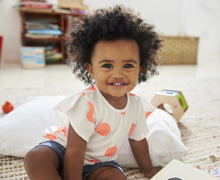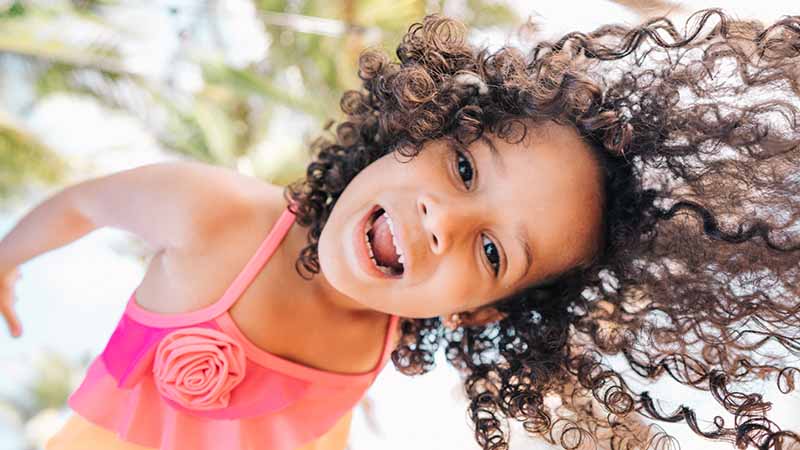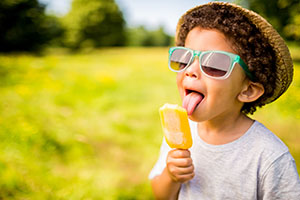Safety Checklist for Home
You can download this article as a PDF (English, Spanish).
 Use this checklist to help make your home a safer place for children. Share it with your child’s caregivers or grandparents, so that their homes will be safer to visit.
Use this checklist to help make your home a safer place for children. Share it with your child’s caregivers or grandparents, so that their homes will be safer to visit.
Water and Bath Safety
- Never leave a child alone in or near water, including in the bathtub.
- Place a non-skid mat or non-slip strips in the bathtub or shower.
- Keep the toilet lid closed, and use a lid lock.
- Empty buckets that have liquid in them.
- Have your child wear a life jacket on boats, on docks and around lakes, rivers and the ocean.
- Fence all four sides of a swimming pool, hot tub or spa.
Poisons
- Store medicine, cleaning products, dishwasher soap, detergent pods, makeup, button batteries, nicotine vials and other unsafe products out of reach or in a locked cabinet.
- Keep products in the bottles they came in.
- Buy products with child-resistant caps.
- Keep houseplants out of reach.
- Install a carbon monoxide detector on every level of your home, especially near all sleeping areas.
- Add the number for the Poison Center in your mobile phone and post it near your home phone: 800-222-1222.
Fire and Burn Safety
- Install a smoke detector on each floor and outside each bedroom. Change the batteries twice a year.
- Make a fire escape plan. Practice it.
- Place guards around heaters and fireplaces.
- Buy flame-resistant sleepwear for children.
- Keep matches and lighters out of reach.
- Make sure one window in each room is easy to use as a fire escape.
- Use “cool” night-lights. Keep them away from drapes and bedspreads.
- Set your hot water heater at 120°F (49°C).
- Use a cool-mist humidifier (not a vaporizer).
- Keep hair dryers, curling irons and straighteners unplugged and stored out of reach.
- Never hold your child when you are drinking hot liquids or cooking on the stove.
- Keep cups and dishes with hot contents away from the edges of tables.
Electrical Cords and Outlets
- Put plastic plug covers in unused outlets.
- Protect outlets with ground fault circuit interrupters.
- Repair frayed cords and loose plugs.
- Keep cords and power strips out of reach.
Falls
- Never leave a baby alone on a changing table, sofa, bed or other high place.
- Keep changing supplies within reach when changing your baby.
- Place a carpet or a non-skid rug under the crib and changing table.
- Place self-latching doors or non-accordion gates at the top and bottom of stairs.
- Do not use a baby walker with wheels.
- Keep cribs, playpens, beds, chairs and other furniture away from windows.
- Use window guards, stops or safety netting on windows, balconies, decks and landings. Window screens do not keep kids in.
Doors and Windows
- Use doorknob covers on doors so toddlers can’t enter unsafe rooms or leave the house alone.
- Use cordless window coverings if possible. If not possible, cut window blind or drapery cords, and use safety tassels. Keep cords well out of the reach of children.
- Use safety glazing on glass doors, tabletops and panels.
Choking
- Keep balloons and plastic bags away from children ages 3 or younger.
- Avoid smaller toys and toys with small parts for babies and young children. If an item can fit inside of a toilet paper tube, it is too small for them.
- Remove crib gyms and hanging toys from the crib when your baby can get up on their hands and knees.
- Don’t serve these items to children less than 4 years of age: chunks of hard fruit or vegetables, grapes, hot dogs, sausages, popcorn, chunks of cheese or meat, round candies or nuts. Learn more about preventing choking.
Toys
- Choose toys that are right for your child’s age and skills.
Furniture
- Cover sharp edges and corners.
- Mount flat-screen TVs to the wall. Place box-style TVs on low, stable furniture. Secure bookshelves and other heavy furniture with wall brackets.
- Make sure furniture is not painted with lead paint.
- Check to see if used baby furniture and gear has been recalled. Contact the U.S. Consumer Product Safety Commission at cpsc.gov or 800-638-2772.
- Cribs and playpens should be sturdy, with bars no more than 2-3/8 inches apart. Check that cribs are in good repair, with mattresses fitting closely against the sides. Don’t use bumper pads, sheepskins, pillows or quilts. Only use a tight-fitting sheet and place babies to sleep on their backs for naps and at night.
- Use a sturdy, stable high chair with a secure locking tray and a belt with a crotch strap. Always be near and watch babies and toddlers in high chairs.
- Use baskets or boxes without lids to store toys.
Healthy Families
- All parents feel stressed at times. Use the 10-foot rule. If you are angry, make sure the baby is in a safe place and stay 10-feet away until you calm down. Never shake a baby.
- Have a plan for when you are feeling too much stress. Include a list of three people or places you can call when the stress of parenting is getting to you.
Kitchen
- Use the stove’s back burners, and turn pot handles toward the back.
- Use knob covers or a stove shield to keep children from turning the oven on.
- Put scissors, knives and other sharp objects in latched or high cabinets.
- Keep hot foods, liquids and appliances out of reach.
- Keep chairs and step stools away from counters and the stove.
- Make sure heavy appliances (stove, refrigerator, etc.) can’t be pulled over.
- Keep a working fire extinguisher nearby. Make sure older children and adults know how and when to use it.
- Remove refrigerator magnets small enough to fit in a child’s mouth.
- Keep children away from the front of the oven when it is on.
Firearm Safety
- Always store firearms unloaded, locked in a firearm safe or lock box, and the ammunition stored and locked separately.
- Use a gun safe, lock box or trigger or chamber lock to store guns.
- Use combination locks instead of keyed locks.
- Temporarily remove firearms from your home if a family member is depressed, suicidal or is abusing drugs or alcohol.
Prepare for Emergencies
Keep a well-stocked first aid kit and disaster supply kit in your home. Refresh expired products each year.
Put the numbers for emergency response, the Poison Center, the crisis line, and your doctor in your phone and post them near your home phone. Also, post your name, address and phone number next to each phone in your home.
- 911
- Washington Poison Center: 800-222-1222
- King County's 24-Hour Crisis Line 866-427-4747 (toll-free). Check here for the number for crisis lines in other counties in Washington state.

